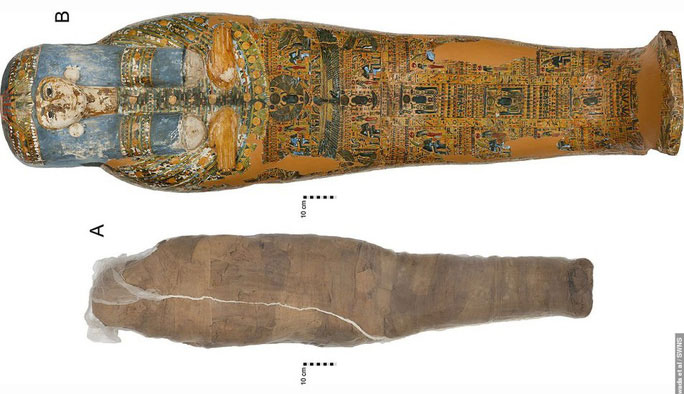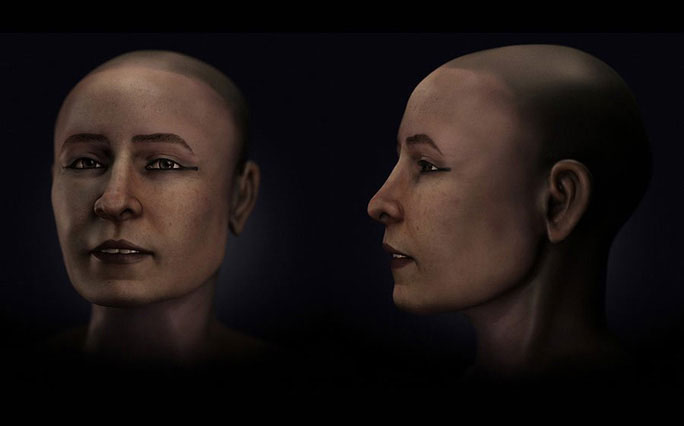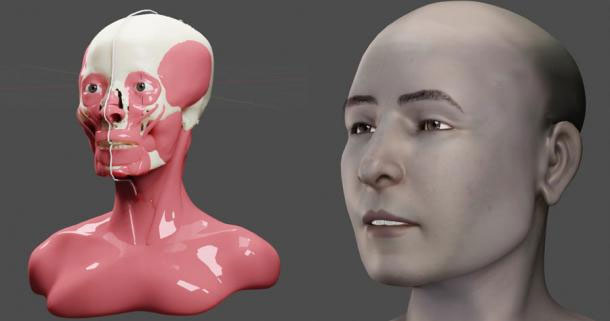Shep-en-Isis is a famous mummy from Switzerland, originating from ancient Egypt, and has been housed in the St. Gallen Abbey Library since 1820. Thanks to modern science, the public can now see her face.
The project “Forensic Facial Reconstruction of Shep-en-Isis” has yielded unexpected results, bringing back a woman aged 30-40 with olive skin and the delicate facial features characteristic of Egyptians from ancient times.

The mummy Shep-en-Isis, now owned by Switzerland – (Photo: FAPAB Research Center / Cicero Moraes)
According to Ancient Origins, this mummy was found in the mortuary temple of Pharaoh Hatshepsut in the Deir el-Bahari valley, on the west bank of the Nile River. She was buried in a family tomb alongside her father, a wealthy nobleman from a lineage of priests, who was well-educated and held formal qualifications.

Portrait of the Egyptian noblewoman after reconstruction – (Photo: FAPAB Research Center / Cicero Moraes).
Switzerland acquired her and has displayed her ever since. Research on the mummy indicates that she was born around 650 BC and died approximately between 620 and 610 BC.

Most details are based on accurate anatomy – (Photo: FAPAB Research Center / Cicero Moraes)
The project for forensic facial reconstruction of the Egyptian mummy is led by Brazilian expert Cícero Moraes, who is renowned in the field of forensic reconstruction of historical figures. He and his team utilized anatomical evidence from the mummy, combining data from anthropological studies and other information about Shep-en-Isis to achieve the most complete likeness.
Most details are supported by clear anatomical evidence, with only the skin tone and eye color requiring the research team to make educated guesses based on the skin tones and eye colors of Egyptians from that period. Shep-en-Isis has also been depicted with an intelligent face and eyes, reflecting her social class and educational background.

















































